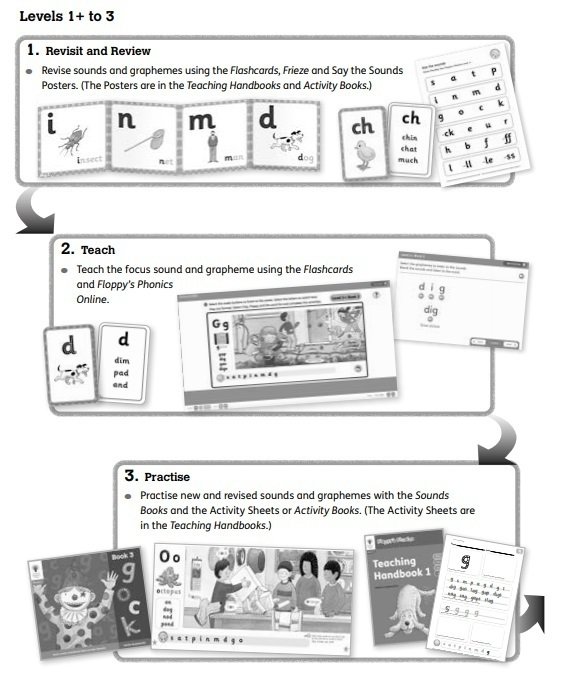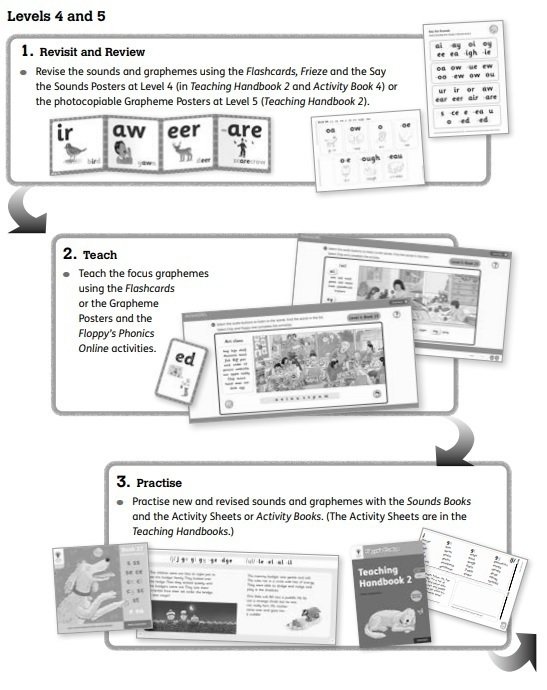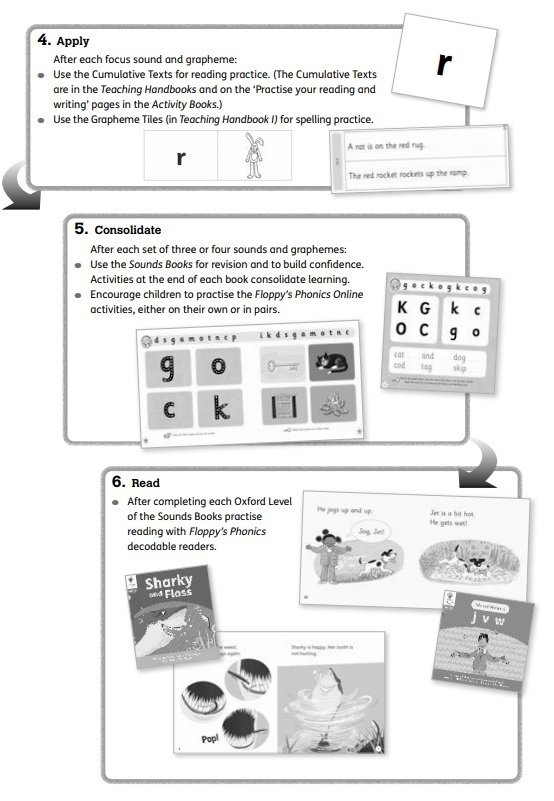Phonics
At St Maria Goretti Catholic Academy, we use a systematic synthetic approach to phonics. This means that we teach with an approach which teaches children to recognise letters (graphemes) and their associated sounds (phonemes). It involves breaking a word down into the smallest units of sound. The scheme that we follow is called “Floppy Phonics”, which has been developed by Oxford Owl.
Early Reading and Phonics
Phonics is recommended as the first strategy in which children should be taught to begin their reading journey. Children are taught to read using Oxford Reading Tree: Floppy's phonics. This is a DFE approved scheme.
Systematic - A structured, methodical system , teaching phonemes (sounds) and corresponding graphemes (letters) using a clearly defined sequence.
Synthetic - When phonemes (sounds), are associated with graphemes (letters), which are pronounced in isolation and then blended together.
Phonics - A method of teaching reading, which uses sounds and symbols with an alphabetic writing system.
Grapheme - the smallest meaningful contrastive unit in a writing system.
Digraph - Two letters that make one sound and when presented in the written system becomes a digraph.
Trigraph- Three letters that make one sound and when presented in the written system becomes a trigraph.
Decode - Decoding in reading is interpreting meaning from a written text. A simple example is segmenting the sounds in the word DOG - /d/ + /o/ + /g/ and then blending the sounds to make the word 'dog.' Decoding can also involve identifying separate word parts to determine the whole word, such as finding the familiar root word 'sense' in the longer word 'sensation,' then recognizing the suffix '-ation', then putting the word together.
Blending- To read the graphemes singular or when presented in letter groups of 2 and 3 and then blending each of the graphemes together to read the word.
Segmenting -When the word is broken down to spell.
FS1
We begin Phonics in with our youngest children in school in FS1. We work hard to develop children’s listening skills, and focus on the seven aspects that have been proven to be important precursors to a child’s success in phonics.
Aspect 1 - Environmental Sound Discrimination.
Aspect 2 - Instrumental Sound Discrimination.
Aspect 3 - Body Percussion Sound Discrimination.
Aspect 4 - Rhythm and Rhyme.
Aspect 5 - Alliteration.
Aspect 6 - Voice Sounds.
Aspect 7 - Oral Blending and Segmenting.
When children have developed these skills, we will move onto learning letter sounds. We work our way through the “Floppy Phonics” scheme, starting with Book 1. Children will learn letter sounds over 2 lessons, one lesson is used to revisit and review the letter sounds already known and to introduce the new letter sound. The next lesson is used to apply the new knowledge, and to practice it. Working through this systematic approach allows children to embed their phonic learning to their long-term memory.
Please follow the link below to find out how to pronounce the sounds.
https://cdn.oxfordowl.co.uk/2016/05/05/20/22/32/561/20097_content/index.html?id=ae
Please follow this link for the Alphabetic Code Chart, which shows the written representations of each sound.
Your child will bring home a reading book that has been matched to their phonic reading ability. As per our school reading policy, please read this book at least three times at home. Teachers may send home different practice resources, such as “grapheme and picture tiles”, activity sheets and “say the sounds posters”. Your child’s teacher will explain how you are expected to use these resources as and when they are sent home.
FS2
This is an example of a lesson sequence for levels 1+ to 3

Follow the links below for sounds taught in this year group
Year 1
This is an example of a lesson sequence for levels 4 to 5

Follow the links below for sounds taught in this year group
As with the English language, there are some words that your child will encounter that are not phonetically decodable. These are called helpful words. Please follow the links below for helpful words for each level.
Phonics Screening Check
At the end of Year 1, children will complete a Phonics Screening Check.
What is the Phonics Screening Check?
It is designed to give teachers and parents information on how your child is progressing in phonics. It will help to identify whether your child needs additional support at this stage so that they do not fall behind in this vital early reading skill.
What is in the Phonics Screening Check?
There are two sections in this 40-word check and it assesses phonics skills and knowledge learned through Reception and Year 1. Your child will read up to four words per page for their teacher and they will probably do the check in one sitting of about 5–10 minutes.
What sort of check is it?
It is a school-based check to make sure that your child receives any additional support promptly, should they need it. It is not a stressful situation as the teacher will be well-equipped to listen and understand your child’s level of skills. There will be a few practice words first to make sure your child understands the activity.
What does it check?
It checks that your child can:
- Sound out and blend graphemes in order to read simple words.
- Read phonically decodable one-syllable and two-syllable words, e.g. cat, sand, windmill.
- Read a selection of nonsense words which are referred to as pseudo words or “alien words”.
How will my child be scored? Is there a pass mark?
The check is not about passing or failing but checking appropriate progress is being made. If children do not reach the required standard, then the teacher will be in touch to discuss plans and offer additional, tailored support to ensure that your child can catch up. Children progress at different speeds so not reaching the threshold score does not necessarily mean there is a serious problem. Your child will re-sit the check the following summer term.
For the last few years, the threshold mark (or pass standard) set by the government has been 32 correct answers out of 40.
What happens to the results?
The school will report your child’s results to you by the end of the summer term as well as to the local authority, but the results won’t be published in a league table as with SATs. If you have any concerns, do talk to your teacher about this in a parents’ meeting.
What can I do to help my child?
Check with your child’s teacher if there are any particular areas that you should focus on at home so that you are working together to support your child.
What should I do if my child is struggling to decode a word?
- Say each sound in the word from left to right.
- Blend the sounds by pointing to each letter, i.e. /b/ in bat, or letter group, i.e. /igh/ in sigh, as you say the sound, then run your finger under the whole word as you say it.
- Talk about the meaning if your child does not understand the word they have read.
- Work at your child’s pace.
- Always be positive and give lots of praise and encouragement.






